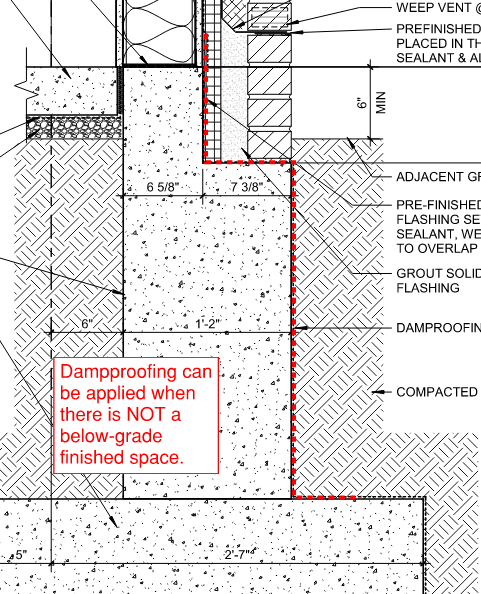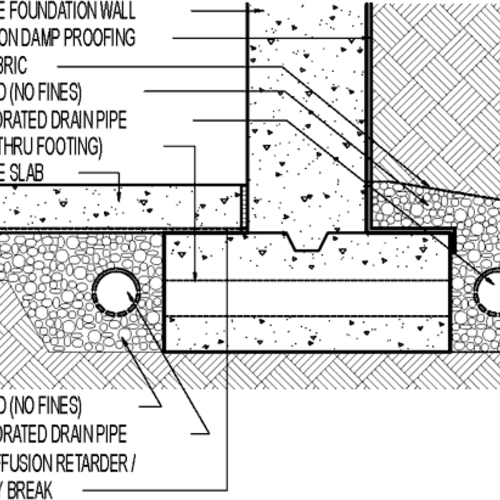Fixing condensation problems for good with mould treatment newcastle
Fixing condensation problems for good with mould treatment newcastle
Blog Article
Checking Out the Different Techniques and Solutions for Effective Damp Proofing
Wetness in structures presents considerable obstacles to both architectural honesty and interior air high quality. Different methods and remedies have actually arised to battle this prevalent concern. From standard damp-proof membrane layers to cutting-edge chemical treatments, each approach offers one-of-a-kind advantages. Understanding these options is crucial for efficient wetness control. Nonetheless, choosing the best service depends upon specific structure conditions and demands, triggering further exploration right into the most efficient damp proofing approaches available.
Recognizing the Sources Of Moisture
Although wetness can develop from various sources, recognizing these reasons is important for effective removal. Generally, moisture stems from 3 primary resources: rising damp, permeating moist, and condensation. Increasing wet takes place when groundwater travels up-wards via permeable materials, such as block or rock, frequently due to an absence of an efficient barrier (mould treatment newcastle). Penetrating wet is typically brought on by exterior aspects, consisting of roofing system leakages, malfunctioning rain gutters, or damaged walls, allowing water to penetrate a home. Condensation, on the other hand, arises from excess wetness in the air, usually worsened by inadequate ventilation and temperature differences, resulting in water droplets creating on surfaces. Recognizing these underlying issues is vital, as each sort of dampness calls for a customized approach for remediation. Proper analysis assists in establishing one of the most reliable remedies, inevitably guarding the architectural honesty of a building and enhancing interior air quality
Typical Damp-Proof Membrane Layers

Chemical Damp-Proofing Solutions
Chemical damp-proofing remedies use an innovative approach to avoid dampness invasion in structures. These approaches typically involve the application of fluid chemicals that pass through stonework and form an obstacle against climbing damp. Generally utilized chemicals include silanes, siloxanes, and other water-repellent agents that respond with surface products to create a hydrophobic layer.The application procedure usually requires drilling holes right into the walls, injecting the chemical solution, and enabling it to treat. This approach is especially helpful for older frameworks where typical damp-proof membrane layers might be impractical. In addition, chemical damp-proofing can be less disruptive and extra cost-effective than extensive improvement projects.While efficient, these services rely on proper application and environmental conditions for peak performance. Normal upkeep and monitoring are vital to assure the longevity of the damp-proofing treatment. Generally, chemical damp-proofing represents a flexible option for guarding buildings against moisture-related damage
Dental Caries Wall Surface Building Methods
Cavity wall building strategies supply numerous benefits, specifically in dampness control and energy effectiveness. By incorporating an air void between 2 layers of masonry, these walls successfully alleviate water ingress while enhancing insulation. This mix not only secures frameworks from wetness however also contributes to decreased power consumption.
Benefits of Tooth Cavity Wall Surfaces
When considering efficient damp proofing approaches, the advantages of tooth cavity wall surfaces stick out prominently. Dental caries wall surfaces contain two separate layers, developing an air space that properly decreases moisture infiltration. This layout lessens the danger of dampness, as the outer wall serves as an obstacle versus rain and water ingress. Furthermore, dental caries wall surfaces boost thermal insulation, which adds to power performance by decreasing warm loss. They additionally provide sound insulation, helping to create a quieter interior environment. The air void allows for air flow, which assists in moisture control and minimizes the probability of mold and mildew growth. These benefits not only enhance the overall convenience of a building yet additionally add to its long life and architectural stability.
Moisture Control Methods
Reliable wetness control techniques are important in dental caries wall construction to assure lasting protection against dampness. One main approach includes the incorporation of weep openings, which help with water drainage from the tooth cavity, avoiding build-up. Additionally, making use of breathable membranes can assist handle dampness degrees while permitting caught vapor to escape. Appropriate placement of insulation is likewise important, as it must not obstruct water drainage paths. Moreover, making sure that the external leaves of the tooth cavity wall surface are constructed with water-resistant products boosts total durability. Routine upkeep checks are important to determine any kind of clogs or damage early, securing the structure's stability. Ultimately, a mix of these techniques develops a durable protection versus wetness intrusion in tooth cavity walls.
Insulation and Energy Effectiveness
Insulation plays an essential function in enhancing energy efficiency within dental caries wall surface building. By incorporating protecting materials, these walls produce a thermal obstacle that lessens warmth loss and lowers power consumption. Effective insulation not just aids preserve a stable indoor temperature level but also alleviates the threat of moisture, as it stops condensation within the wall surface dental caries. Different strategies, such as using rigid foam boards or mineral woollen, can be used to accomplish ideal insulation performance. Furthermore, appropriate installment is important to guarantee that spaces and spaces are reduced, which can otherwise compromise energy effectiveness. Inevitably, a well-insulated dental caries wall surface contributes greatly to overall sustainability and decreases cooling and heating prices for house owners.
Exterior Damp Proofing Approaches
Exterior moist proofing techniques are crucial for safeguarding frameworks from dampness infiltration. Two reliable methods include the application of water resistant membrane layers and the setup of French drains. These remedies aid minimize water build-up and protect the integrity of structures.
Waterproof Membrane Application
While various approaches exist for avoiding moisture access, the application of water resistant membranes stays a highly efficient outside moist proofing strategy. These membrane layers are generally made from materials such as polyethylene, rubber, or changed bitumen, supplying a robust obstacle versus water penetration. The installation process entails using the membrane layer to the exterior surface areas of wall surfaces or structures, ensuring complete protection to protect against leaks. Appropriate adhesion and securing at joints are critical to maximizing effectiveness. Water resistant membranes can be applied in numerous types, consisting of liquid coatings and sheet membrane layers, enabling for flexibility based on the certain demands of the framework. This method not only safeguards buildings from moisture yet likewise improves their durability and architectural honesty.
French Drain Installation
One effective approach for handling groundwater and preventing wetness accumulation around a building's foundation is the installation of a French drain. This drainage system contains a trench full of gravel and a perforated pipe that redirects surface area water away from the foundation. Correct setup calls for careful planning, ensuring that the drain inclines away from the structure to help with optimal water flow. In addition, the area of the drain is vital; it should be placed in areas vulnerable to pooling or excess wetness. Routine maintenance, consisting of clearing debris from the gravel and guaranteeing the pipeline stays unblocked, is necessary for long-lasting performance. Ultimately, a well-installed French drain can greatly decrease the risk of water-related problems in structures and cellars.
Inside Waterproofing Methods
Inside waterproofing approaches are important for protecting a building's interior from moisture infiltration and possible water damage. These approaches commonly involve the application of specific materials and methods created to develop a dampness obstacle within the framework. One common approach is using waterproof finishes or sealants on wall surfaces and floorings, which prevent moisture from passing through surfaces.Additionally, setting up indoor drainage systems, such as sump pumps, can properly handle water buildup in basements and crawl spaces. An additional technique includes the use of vapor obstacles, which are mounted to hinder moisture motion from the ground into living spaces.Moreover, attending to any kind of cracks or voids in walls or foundations with proper sealants guarantees a comprehensive defense against water intrusion. By carrying out these indoor waterproofing methods, property owners can greatly reduce the risk of mold and mildew growth, architectural damages, and various other moisture-related issues. Correct implementation of these methods is vital for long-term defense and building honesty.
Regular Maintenance and Evaluation Practices
Routine upkeep and assessment methods are important for ensuring the long-lasting performance of damp proofing options in any kind of structure. Routine checks make it possible for homeowner to determine very early signs of wetness intrusion, such as peeling paint, mold and mildew growth, and musty smells. These indicators can signify underlying problems that require prompt attention.Inspections ought to be carried out a minimum of annually, focusing on vulnerable areas like basements, creep rooms, and outside walls. Throughout these evaluations, property proprietors need to check out sealants, drainage systems, and air flow to validate they function correctly.Additionally, maintaining downspouts and rain gutters is important, as blocked systems can result in water accumulation near the foundation. Implementing a regular maintenance schedule, in addition to prompt repair work, can significantly extend the life-span of wet proofing actions and protect the structural honesty of the building. Positive procedures eventually add to the total health and safety and security of the living setting.
Frequently Asked Questions
How Much Time Does Damp Proofing Typically Last?
The period of damp proofing effectiveness differs, usually lasting between 20 to 50 years. Variables such as application quality, environmental problems, and upkeep methods greatly influence the longevity of the damp proofing treatment.

Can I Damp Evidence My Home Myself?
The private contemplated the usefulness of do it yourself damp proofing. With correct research and the ideal products, it is possible. However, they also identified the value of professional guidance to assure durable efficiency and protect against future issues.
What Are the Signs of Ineffective Damp Proofing?
Signs of ineffective wet proofing include relentless moldy smells, visible mold growth, peeling paint, wet patches on walls, and wood decay - mould removal newcastle. Home owners ought to attend to these concerns without delay to protect against additional damage and health problems
Does Damp Proofing Affect Indoor Air Top Quality?

Just How Much Does Professional Damp Proofing Expense?
Expert damp proofing costs differ significantly, usually ranging from $1,000 to $5,000 depending upon the building's dimension, the click here level of the moist issue, and picked methods. Each scenario calls for a tailored evaluation for exact rates. Commonly, dampness originates from three primary resources: increasing damp, penetrating damp, and condensation. When taking into consideration effective damp proofing methods, the advantages of dental caries walls stand out prominently. Outside moist proofing techniques are vital for protecting structures from dampness infiltration. While different approaches exist for stopping dampness access, the application of waterproof membrane layers remains a very efficient external moist proofing technique. Indicators of inadequate wet proofing consist of persistent stuffy odors, noticeable mold and mildew development, peeling off paint, wet patches on walls, and wood decay.
Report this page